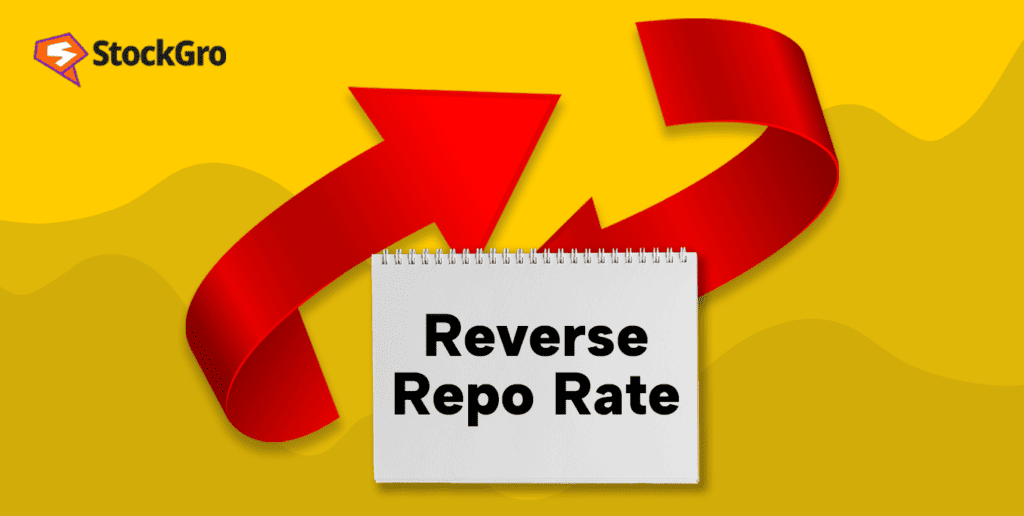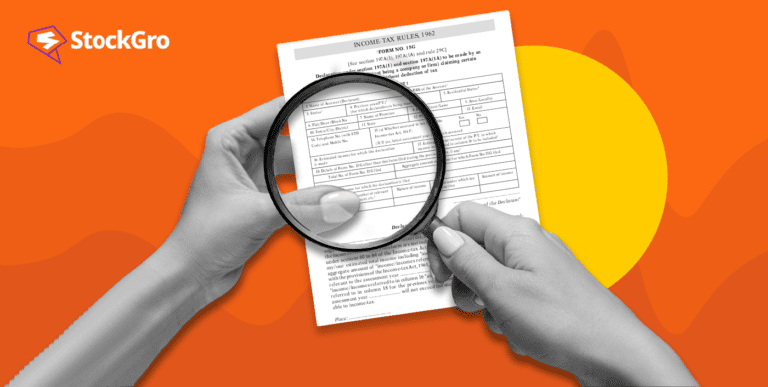
The reverse repo rate is the interest rate at which the Reserve Bank of India (RBI) borrows money from commercial banks in India for a short period. Commercial banks prefer keeping their extra money with the RBI since it’s safe and gives them a fair interest rate. Let’s read more to find out about the reverse repo rate.
What is reverse repo rate?
The reverse repo rate is a crucial tool used by the Reserve Bank of India (RBI). It’s part of the Liquidity Adjustment Policy aiming to control inflation and liquidity in India.
“Repo” stands for “Repurchase Option” or “Repurchase Agreement”, where banks offer certain assets like treasury bills to the RBI to get loans. The current repo rate and reverse repo rate as of 23rd October stands at 6.50% & 3.35% respectively.
The core idea behind the Reverse Repo Rate is to pull in the extra money from the market. This action limits the money investors can borrow. The current Reverse Repo Rate is 3.35%. By doing this, it helps in making sure there’s not too much money in the market which could lead to issues like high inflation.
You may also like: Bank rate vs. Repo rate – Understanding the key differences
Difference between repo rate and reverse repo rate
- In the reverse repo rate scenario, banks place their extra funds with the Reserve Bank of India (RBI) and earn interest from it.
- On the flip side, the repo rate is the rate at which banks borrow short-term money from the RBI.
Infographic: What is the difference between repo rate and reverse repo rate?
| Repo Rate | Reverse Repo Rate | |
| Definition | It is the rate at which RBI lends money to banks | It is the rate at which RBI borrows money from banks |
| Comparison | It is higher than the reverse repo rate | It is lower than the repo rate |
| Purpose | It is used to control inflation and address deficiency of funds | It is used to manage money supply in the economy |
| Mechanism | It involves the sale of securities which would be repurchased in the future | It involves banks parking their surplus funds with the RBI |
Also read: RBI MPC meeting: Repo rate unchanged, what does it mean for you?
What are the features of reverse repo rate?
Key features of the reverse repo rate include:
- It acts as a monetary policy tool for managing money supply in the economy.
- A rise in reverse repo rate leads to lower liquidity since more banks prefer investing with the Central bank.
- A fall in reverse repo rate results in higher liquidity as banks are encouraged to lend more to individuals and businesses.
- The reverse repo rate is always lower than the repo rate.
Why is reverse repo rate important?
The RBI utilizes the reverse repo rate to manage the money supply, as:
- Banks are drawn towards keeping funds with the RBI for safety and decent interest, which decreases liquidity.
- To curb inflation, the RBI hikes the reverse repo rate. This move entices more banks to keep their money with the RBI instead of lending, thus reducing money supply and controlling inflation.
- A high reverse repo rate may fortify the rupee as it further lowers money supply in the economy.
Also read: Cost inflation index – What, why and how?
How does the reverse repo rate control money flow?
A higher reverse repo rate motivates banks to keep their spare funds with the RBI on a short-term basis, which cuts down liquidity in the banking system.
Basically, the RBI takes in extra money from banks against the backing of eligible government securities overnight.
This process falls under the Liquidity Adjustment Facility (LAF) guided by the reverse repo rate.
Why is repo rate higher than reverse repo rate?
The repo rate is set higher than the reverse repo rate. The difference between these two rates is how RBI makes income. They earn more when they lend money to banks at the repo rate than what they pay to banks for the money kept with them at the reverse repo rate.
RBI has set the repo rate higher because they can’t pay more to banks for keeping money and charge them less when lending money. Also, having a lower reverse repo rate nudges banks to not just keep their money but to lend it to people and businesses.
This way, more money is available in the market, which helps businesses grow and people spend. Both repo rate and reverse repo rate are key tools used by RBI to manage money in the market, but they work in opposite ways.
Who decides the reverse repo rate?
In India, the reverse repo rate is set by the Reserve Bank of India’s Monetary Policy Committee (MPC), led by the RBI Governor. They decide this rate every two months in the Monetary Policy Committee meeting.
How reverse repo rate impacts home loans?
If the reverse repo rate increases, banks might raise home loan rates as they find it more beneficial to put money in safe government-backed securities rather than giving home loans.
When the Reverse Repo Rate decreases, home loan rates may also go down.
How is reverse repo rate used to control inflation?
The RBI ups the reverse repo rate to encourage banks to keep extra funds with it to earn more interest. This action takes away money from the system, helping to control inflation. On the flip side, to spur a bit of inflation, RBI might reduce the Reverse Repo Rate and Repo Rate, making more money available in the system.
How reverse repo rate impacts the strength of rupee/currency?
A higher reverse repo rate means banks will keep their spare cash with the RBI to earn better returns instead of lending to individuals and businesses. This lowers the amount of money in the system, which in turn, strengthens the rupee.
Conclusion
Banks in India rely on the Reserve Bank of India (RBI) for their financial requirements. The RBI manages funds distribution and borrowing through repo and reverse repo rates.
The repo rate is always higher than the reverse repo rate. The gap between these rates shows the RBI’s monetary income.

